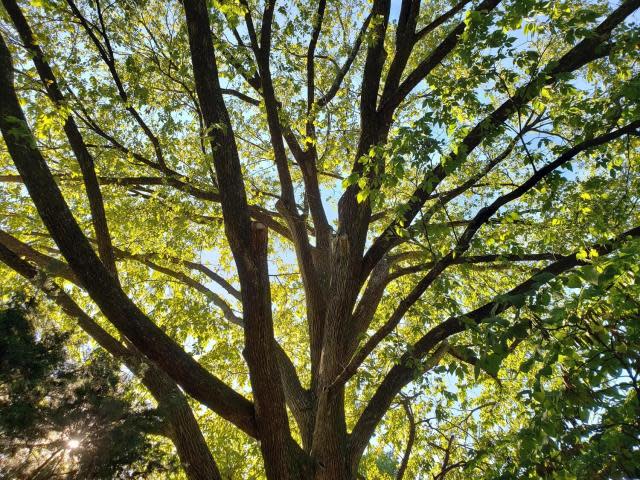Gardener frustrated with barren patches in lawn due to unique backyard layout: ‘Should I just let it go?’
One gardener was already well on their way to a thriving field of wildflowers in their backyard, but when they found themselves with bare patches, they reached out to a community of native plant enthusiasts for specific advice about their next steps.
“So, my back yard is about 800 square feet and fully under the canopy of this big, old American Elm set to one side,” they said in the post, attaching a photo of the mature tree’s gorgeous, spreading branches. “There are also some understory trees,” they added, naming another elm, two redbuds, an American holly, an ash, and an eastern red cedar.

The collection of trees created a shady, dappled backyard, according to the Redditor, which affected what would grow there.
Over the years, they had established a carpet of beautiful violets, celandine poppy, aster, garden phlox, fleabane, and Virginia creeper — native plants for their area, meaning they grew easily with little extra water or care and provided food for local pollinators. Those benefits are available to any homeowner who switches out even part of their lawn for native plants or for another low-water alternative like clover or xeriscaping.
But this gardener had some unwelcome visitors along with the native species. “There are/were also some invasives,” they revealed. “I recently removed some patches of monkeygrass/lilyturf, a patch of vinca, and a patch of some kind of winter creeper.”
Removing these destructive invasive plants left some bare spots in their yard, which they hoped to sow with seeds that would sprout in the spring.
“Do you think that where I’ve sowed I should brush back the leaves come spring, or … should I just let it go and consider it a test of which species will emerge?” they asked. “Either way, should I incorporate some cover crop with the seeds as is usually recommended for prairie/meadow-type situations, for all the usual reasons? And if so, is there anything that would be particularly appropriate for a shaded area?”
Commenters were in favor of lending the garden a benevolent hand. “Generally, brushing back leaves will be better for starting seedlings,” said one user. “It’s a garden, not a real forest floor, so there’s no need to wait for serendipity to produce plants.”
“Regarding cover cropping, I don’t think it would be necessary if you are including some quick-establishing natives in your seed mix,” another user added. “Brown Eyed Susans … etc.”
Join our free newsletter for easy tips to save more, waste less, and help yourself while helping the planet.

